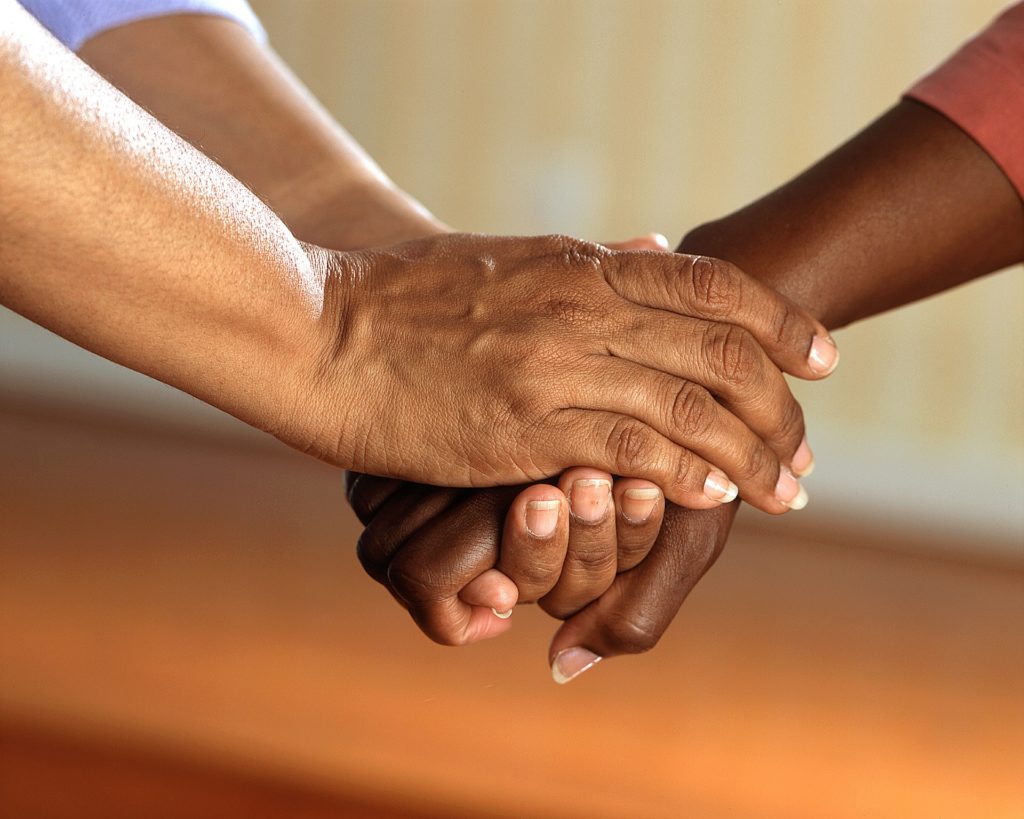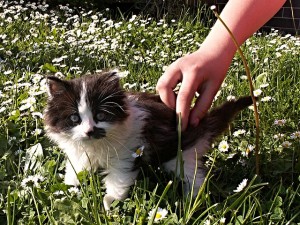- Calls to this hotline are currently being directed to Within Health, Fay or Eating Disorder Solutions
- Representatives are standing by 24/7 to help answer your questions
- All calls are confidential and HIPAA compliant
- There is no obligation or cost to call
- Eating Disorder Hope does not receive any commissions or fees dependent upon which provider you select
- Additional treatment providers are located on our directory or samhsa.gov
Having Hope with Anorexia: Encouragement for Sufferers, Family & Loved Ones – Part 2

A Story of Hope with Anorexia
Hope with anorexia and hope, in general, is a central theme in recovery.
Combining every aspect of an individual and their life and altering them through treatment and recovery is part of a plan for hope. That was a huge revelation for me: creating a plan for hope that addresses the whole person and using this in treatment.
We would have individuals come to us saying “you’re my last hope, I’ve already done X, Y, and Z.” This is a dark place to be in, where an eating disorder takes us to this place of despair and despondency, and where we feel like there is no hope at all.
A number of years ago, we worked with a family from a remote fishing village in Alaska. They had a young girl who was six-years-old who was diagnosed with anorexia.
This girl and her family had been to another hospital in a different state. There, she was choosing not to eat and was fairly medically compromised.
At this hospital, they put this girl in a straitjacket. Imagine, a six-year-old girl in a hospital put in a straitjacket and being force-fed. As horrific as this is, this is what was called “treatment” in these early days, “we are going to make you eat.”
Obviously, that didn’t work and, as you can well imagine, created a greater sense of despondency, a greater sense that “something is wrong with me.” It also made the family more alarmed.
They had taken her to another hospital where she was IV fed. Yes, this helped to get nutrients into her body, and this kept her alive, but ultimately, she still exhibited no sense of wanting to eat or develop a normal relationship with food.
This family then contacted us. Helping this girl was not an immediate “yes” for us, as we have never seen a patient that was six-years-old. The youngest we had worked with was between 12 to 13-years old. Our team, including a psychiatrist, medical doctor, nurse, counselors, etc., worked together to discuss making a decision.
She came with her mom and dad, and we ultimately accepted her and planned to use the “why not” theory. We were thinking “if we can try some things that have the potential to be life-saving and help her and her family, why not?”
We gave ourselves a certain amount of time to approach this and look for improvement. Because we were concerned for her medically, she was in a special room where our counselors got down on their hands-and-knees with the assignment to be entering into her world and making eye contact with her.
In the previous hospital programs she had been in, she hadn’t been touched or hugged, she was treated as though something terrible was wrong with her. She was used to seeing people in white lab coats.
After day 3 of this, we were growing increasingly concerned and wondering what else or what more we needed to do. On this day, I was on my way home and heavily burdened by this.
 I drove past a local veterinarians office, and there was a sign outside that read “Free Kittens!” I went in and asked if they had any kittens left and he said, “well, I just have one, it’s the runt, but I don’t think it’s going to survive.”
I drove past a local veterinarians office, and there was a sign outside that read “Free Kittens!” I went in and asked if they had any kittens left and he said, “well, I just have one, it’s the runt, but I don’t think it’s going to survive.”
I asked him to let me see it. It probably looked more like a mouse. It could fit in the palm of your hand, and after I held it I told the vet, “this is perfect, this is just the kitten I want.”
He looked at me and said, “okay, but it’s probably not going to live.” He gave me a little tube of sugary food for the kitten to lick, and I took this kitten and its little tube back to The Center.
I went into the room where the six-year-old girl was, and I said to her “sweetheart, your job is to keep this kitten alive.” She would pet it and pet it. She wouldn’t let it go and would hold it very close.
She began drinking protein and would do it with us sitting there, very slowly. We would say, “sweetheart, I need you to drink that,” not forcing her in the way she’d experienced before, and she would, alternating between drinking a little bit of water and a little bit of protein drink.
She would sit and pet this kitten and drink. We actually had a joke that she was going to rub the fur right off of it because she just would not stop petting it.
Approximately two and a half days after giving her this little runt of a kitten, as she was petting the kitten, she looked up at her counselor and said: “I’d like to eat.” When asked what she wanted to eat, she actually had a little bit of a list!
She wanted pop-tarts, for example. So, we brought them to her, and she began eating.
Going into this area of “why not,” became huge and brought about the potential for positive change that ended up being life-saving. Really, from that day of asking for a pop-tart, she began to eat.
Time passed, and she gained weight. There were a few hurdles of her not feeling well, or her digestive functions had to slowly get accustomed to being used again.
She began to gain weight and even began looking different, getting color and aliveness back into her skin. She began to laugh, and she continued to hold this little kitten so close.
We began to wonder what was going on with this. Why she had stopped eating at six-years-old was still a mystery.
We ended up discovering that she had “failure to thrive,” she was not manufacturing or releasing Human Growth Hormones, so she didn’t have the hunger or initiative to thrive.

We had told her “sweetheart, your job is to keep this kitten alive,” and her way of doing so was to pet and hold it continuously. In doing so, all of that touch led to her releasing Human Growth Hormones.
We see this in premature babies; they even put them on “touch schedules” where they are removed from an incubator and touched and stroked because we know that touching releases the growth hormone.
That is what happened that day I stopped at the vet’s office. We brought those two together, and they both needed touch and release of growth hormones.
With previous treatment, she was getting love from her parents but really, didn’t get a lot of “touch” being in treatment all that time.
We put her on a “hug” schedule, and we let her know how special she was, that she has value, that something wasn’t seriously wrong with her, that she wasn’t defective. We found that love and acceptance-seeking was the piece to the puzzle that was missing.
The time came for them to go back to Alaska, and her parents decided to save the kitten at the Center for other kids. They were sure she would want a kitten when they got home, but as a part of her growth, decided to leave the kitten here.
The kitten grew and had a few litters that we called Center Babies.
This story really began to change our belief that there is always hope. We will always search, in the thousand-piece puzzle that is an eating disorder, for that one missing piece, because when you find it, it is beautiful and life-giving.
Please See:
Having Hope with Anorexia: Encouragement for Sufferers, Family & Loved Ones – Part 1
Source:
Virtual Presentation by Dr. Gregory Jantz in the May 17, 2018, Eating Disorder Hope Online Conference II: Anorexia Hope & Healing in 2018.
Please view the press release Here.
Author:
 Dr. Gregory Jantz is the founder of “The Center – A Place of HOPE” in Edmonds, Washington, voted a top ten facility for the treatment of depression in the United States. Dr. Jantz pioneered Whole Person Care in the 1980’s and is a world-renowned expert on eating disorders, depression, anxiety, technology addiction, and abuse. He is a leading voice and innovator in Mental Health utilizing a variety of therapies including nutrition, sleep therapy, spiritual counseling, and advanced DBT techniques. Dr. Jantz is a best-selling author of 37 books and has appeared on CBS, ABC, NBC, Fox, and CNN.
Dr. Gregory Jantz is the founder of “The Center – A Place of HOPE” in Edmonds, Washington, voted a top ten facility for the treatment of depression in the United States. Dr. Jantz pioneered Whole Person Care in the 1980’s and is a world-renowned expert on eating disorders, depression, anxiety, technology addiction, and abuse. He is a leading voice and innovator in Mental Health utilizing a variety of therapies including nutrition, sleep therapy, spiritual counseling, and advanced DBT techniques. Dr. Jantz is a best-selling author of 37 books and has appeared on CBS, ABC, NBC, Fox, and CNN.
 About the Transcript Editor: Margot Rittenhouse is a therapist who is passionate about providing mental health support to all in need and has worked with clients with substance abuse issues, eating disorders, domestic violence victims, and offenders, and severely mentally ill youth.
About the Transcript Editor: Margot Rittenhouse is a therapist who is passionate about providing mental health support to all in need and has worked with clients with substance abuse issues, eating disorders, domestic violence victims, and offenders, and severely mentally ill youth.
As a freelance writer for Eating Disorder and Addiction Hope and a mentor with MentorConnect, Margot is a passionate eating disorder advocate, committed to de-stigmatizing these illnesses while showing support for those struggling through mentoring, writing, and volunteering. Margot has a Master’s of Science in Clinical Mental Health Counseling from Johns Hopkins University.
The opinions and views of our guest contributors are shared to provide a broad perspective of eating disorders. These are not necessarily the views of Eating Disorder Hope, but an effort to offer a discussion of various issues by different concerned individuals.
We at Eating Disorder Hope understand that eating disorders result from a combination of environmental and genetic factors. If you or a loved one are suffering from an eating disorder, please know that there is hope for you, and seek immediate professional help.
Published on September 15, 2018.
Reviewed & Approved on September 15, 2018, by Jacquelyn Ekern MS, LPC
Published on EatingDisorderHope.com

The EatingDisorderHope.com editorial team comprises experienced writers, editors, and medical reviewers specializing in eating disorders, treatment, and mental and behavioral health.

